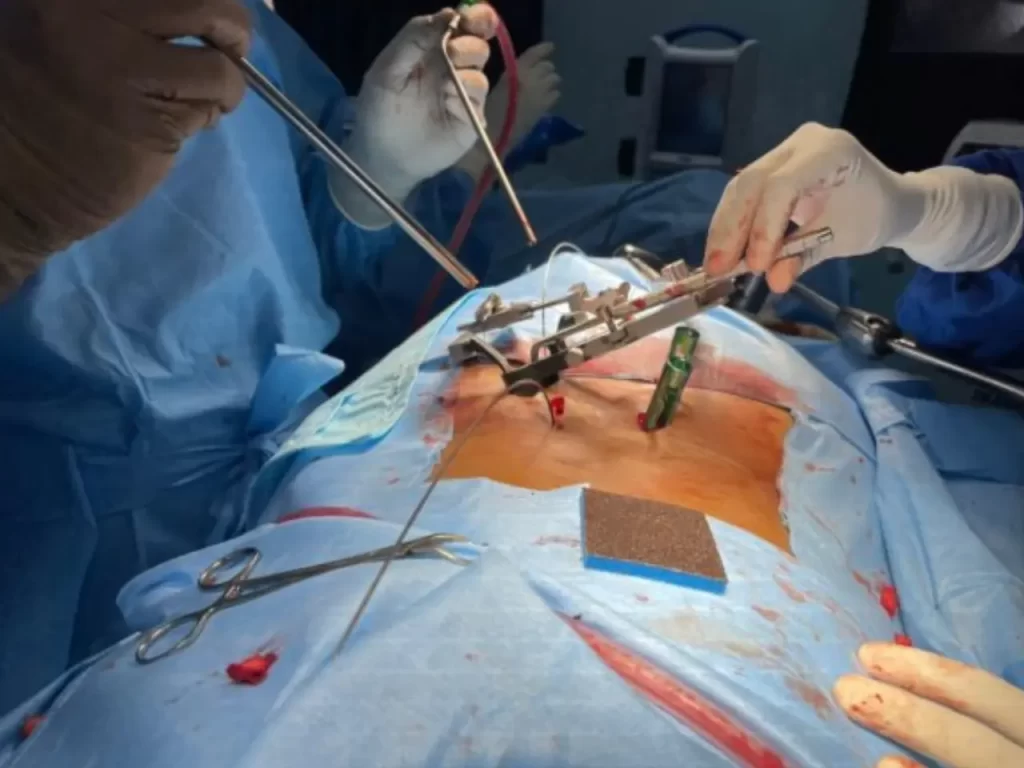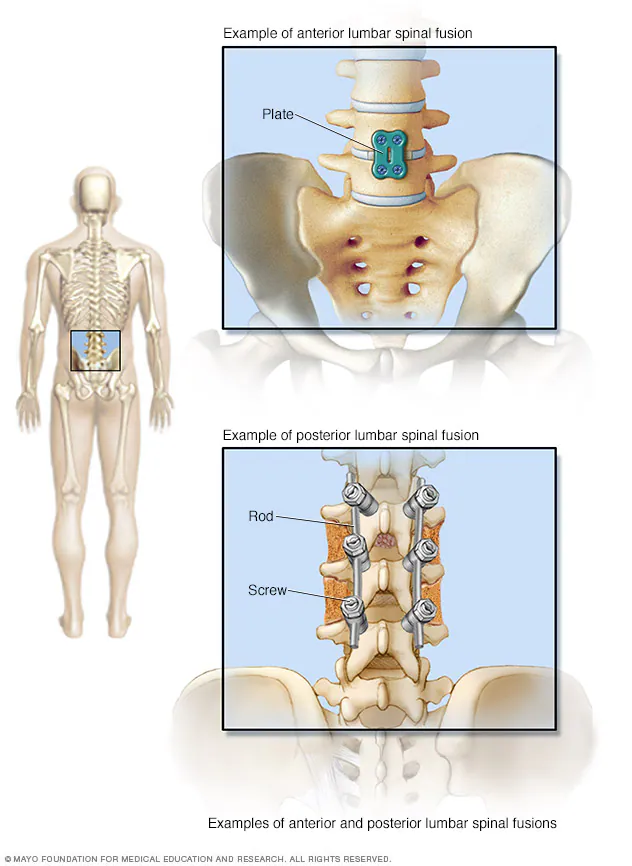Spinal Surgery In India
Spinal surgery, also known as back surgery, encompasses various procedures performed on the spine to address conditions like pain, nerve compression, spinal deformity, and injuries. These procedures can range from minimally invasive techniques to open surgery and may involve discectomy, laminectomy, spinal fusion, or the use of artificial discs. The specific surgery chosen depends on the individual’s condition and the surgeon’s assessment
- Discectomy: Removal of a portion of a damaged disc to relieve pressure on nerves.
- Laminectomy: Removal of the back part of a spinal bone to create more space for the spinal cord and nerves.
- Spinal Fusion: Joining two or more vertebrae to stabilize the spine and reduce pain.
- Artificial Discs: Replacement of a damaged disc with a plastic and metal device.
- Minimally Invasive Spine Surgery (MISS): Using smaller incisions and specialized tools to access the spine, often resulting in faster recovery.
- Open Spine Surgery: Involves a larger incision along the backbone.
- Robotic Spine Surgery: Uses robotic systems to assist the surgeon with precision and accuracy.
Procedure Details
How should I prepare for minimally invasive spine surgery?
Before minimally invasive spine surgery, you’ll meet with your surgeon for a consultation. They’ll perform a physical exam and order imaging tests to plan for the procedure.
Your surgeon will give you specific instructions to follow before surgery, which may include:
- Undergo additional tests, like an X-ray, computed tomography (CT) or magnetic resonance imaging (MRI) test of your spine.
- Stop smoking if you smoke.
- Get regular physical activity before your surgery to keep your body and muscles in shape and shorten your recovery time.
- Stop taking or start taking certain medications before surgery. This may include taking antibiotics or stopping any non-essential medications or supplements that may interfere with your healing. Don’t stop taking medications unless a provider approves it. Lastly, you should always try to hold off on opioids until after your surgery.
- Follow instructions on what you can eat or drink the night before surgery.
- Ask someone to drive you to and from the procedure and help you out at home for the first few days during your recovery.
What happens during minimally invasive spine surgery?
On the day of your surgery, an anesthesiologist will give you anesthesia. Depending on what type of minimally invasive spine surgery you need, you may get local anesthesia, which numbs an area of your spine, so you’ll be awake but won’t feel pain. Or you may be put to sleep with general anesthesia, so you won’t feel any pain.
During minimally invasive spine surgery, your surgeon will:
- Make an incision(s) (cut) in your skin through your back, chest or abdomen.
- Insert a tube and operate under microscope visualization. Alternatively, your surgeon will insert a stick-like device with a camera on the end (endoscope) to see the operating area.
- Use small surgical instruments to complete the procedure through the endoscope tube or through the other incisions with thin, hollow tubes (tubular retractors).
- Remove retractors and devices so your muscles and tissue return to their original position.
- Close the incision site(s) and cover them with bandages.
Do surgeons use robotics during minimally invasive spine surgery?
Yes, certain surgeons and hospital systems rely on robotics to effectively perform minimally invasive spine fusions. Robotics in medicine aren’t sci-fi characters; rather, they’re tools to help surgeons perform complex procedures that require more precision than traditional surgical techniques offer. Your surgeon will let you know if they’ll be using robotic surgery during your procedure.
How long is minimally invasive spine surgery?
Your surgeon will explain how long they expect surgery to take for your situation. It could take less than an hour or a few hours to complete based on the type of minimally invasive spine surgery you’re having.
What happens after minimally invasive spine surgery?
After minimally invasive spine surgery, you’ll move to a recovery area of the hospital while your anesthetic wears off. If you had general anesthesia, you’ll feel groggy when you wake up.
Some procedures allow you to go home the same day as your surgery so you can recover in the comfort of your own home. You may need to stay in the hospital overnight or for a couple of days depending on what your surgeon needed to do.
You’ll likely experience some discomfort after minimally invasive surgery, but it’ll be less intense than undergoing open surgery. This is because the minimally invasive techniques limit damage to your muscles or tissues. To manage your pain, your provider may recommend pain relievers.
You’ll also leave the surgery with instructions on how you can take care of yourself during your recovery. This includes incision site care, what activities are safe to do and guidance for follow-up appointments.
Risks / Benefits
What are the benefits of minimally invasive spine surgery?
The benefits of minimally invasive spine surgery include:
- Shorter procedure and recovery time.
- Less pain after surgery due to limited muscle and tissue damage.
- A few or one scar(s) instead of one large one.
- Reduced risk of infection.
- Decreased blood loss in the operating room.
This type of surgery allows you to get back on your feet faster than traditional surgery, so you don’t need to take a lot of time off of work or school before you feel better

Recovery and Outlook
What is the recovery time for minimally invasive spinal surgery?
The total time to fully recover after minimally invasive spine surgery depends on the cause of symptoms, the degree of difficulty of your procedure, your age, your general health and other factors. It could take weeks to months. Your surgeon will give you the best time estimate for your situation.
What can I expect during recovery after minimally invasive spine surgery?
During your recovery, you’ll need to rest and relax to let your body heal. This can be difficult to do if you live an active lifestyle. Avoid strenuous activities and heavy lifting for several weeks following surgery. You may need to ask someone to help you out around your home for a few days to weeks while you rest.
Your provider might recommend physical therapy to help you regain strength and speed up your recovery.
Make sure you keep all follow-up appointments with your care team. They’ll check your progress and answer any questions or concerns you may have


